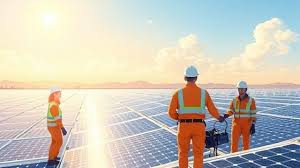Column
ASUU, Have A Rethink!
A renowned philosopher of his time, Mihaly Csikszentimihalyi, once said, “…if the next generation is to face the future with zest and self-confidence, we must educate them to be original as well as competent”. This philosophical statement underscores why the leadership of the Academic Staff Union of Universities (ASUU) must have a rethink over its planned strike action, billed to commence very soon, according to the authorities of ASUU.
Already, Senate President, David Mark, with bated breath, has voiced his disquiet over ASUU’s proposed industrial action across the country. Indeed, the senate president did not mince his words over this touchy national issue, recently. Addressing the leadership of one of the nation’s universities who paid him a courtesy visit in his office in Abuja, Mark literally wailed over the issue, and therefore, called on the leadership of the union to shelve the planned strike in the interest of the country.
It would be recalled that the leadership of ASUU, a week ago, threatened to embark on a nationwide strike following the Federal Government’s alleged refusal (again) to honour the agreement it reached with its leadership in 2009. No doubt, ASUU’s proposed industrial action may plunge the nation’s university system into another round of protracted crisis.
The university lecturers are lamenting that after more than three years of negotiations with the federal authorities, the government is still foot-dragging in ratifying the agreement reached between the two parties, a development that is capable of throwing the country’s university education into yet another round of industrial disharmony.
Dr Ademole Aremu, ASUU chairman, University of Ibadan chapter, while briefing newsmen on the matter, last Wednesday, said the leadership of ASUU was appalled by government’s attitude over the agreement reached with the union, which was meant to improve the university system in the country.
The agreement, he insisted, was anchored on four key areas, namely, improving the conditions of service for the university system, funding, granting of autonomy to university system, and enactment of laws to regulate the management of the nation’s universities, among other touchy issues.
The union, Dr Aremu said, was not comfortable over the silence of the Federal Government, considering the length of time it took the ASUU leadership to wrap up the negotiation. Accusing government of adopting “divide and rule” tactics on the matter, the ASUU chairman appealed to all stakeholders to prevail on the federal authorities to implement the agreement reached between the two parties in 2009, without further delay, because the leadership of the union can no longer contain the agitation and restiveness of its members. He warned that continual non-implementation of the agreement would plunge the university system into crisis again. This, to say the least, is unfortunate!
Also commenting on the matter, Prof. Akin Ajisegiri, Ibadan zonal co-ordinator of ASUU, called on traditional rulers, parents and the public to prevail on the Federal Government to implement the agreeement it reached with the union to avert the strike. At a news conference in Lagos, Prof. Ajisegiri noted that the agreement signed in September, 2009, was yet to be honoured by government, and declared: “We are appealing to various organs of government, Obas, Emirs and Obis to appeal to government before we resort to strike”.
Well, ASUU’s latest threat to embark on industrial action is now a subject of public discourse at various campuses of the nation’s universities, as both management and students openly discuss the possible effects should ASUU leadership make good its threat.
All said, one is not oblivious of ASUU’s demands and plights, but it is worth observing that its plan to embark on yet another industrial action (after the suspension of almost eight months strike) is not only ill-timed but is tantamount to scuttling the academic activities of the various universities across the country. This is because the authorities of most universities have reportedly rolled out the time-table for the end of their semester examinations.
While the union presses for its demands and implementation of the agreement in question, its members, as parents, should bear in mind that ASUU’s threat to embark on strike action, would cause hundreds of thousands of undergraduates to languish in their various homes. The consequences can be better imagined than described.
Therefore, it is imperative for the leadership of ASUU to have a rethink on the matter, while negotiations with the Federal Government could continue. After all, their children and wards are also students of the various universities, dotted across the country.
But while calling on the union’s leadership to have a rethink on the planned industrial action, it is absolutely necessary to ask the federal authorities not to snub ASUU’s olive branch to open up fresh negotiations on the issues at stake.
As it were, it is still fresh in the minds of Nigerians the academic losses inflicted on university students in 2077, and last year, during the long-drawn industrial actions declared by the leadership of ASUU, on the issues at stake. Yes, Nigerians, and indeed, university students, would not want the repeat of such industrial actions this year.
The demands and position of ASUU on the matter, no doubt, appear to be genuine. Therefore, the federal government should listen to the leadership of the union and open up fresh negotiations in order to meaningfully resolve these touchy issues as enumerated by the union.
What’s more the demands of ASUU, especially matters like adequate funding, upgrading of university facilities, conditions of service, among others, are issues that should not be glossed over by the federal authorities if the university system is to stand the test of time as citadels of knowledge.
Column
Renewable Energy Faces Looming Workforce Crisis

Column
Why Oil Prices Could See Significant Upside Shift

Column
Nuclear Stocks Soar on Stargate AI Infrastructure Announcement
-

 Business3 days ago
Business3 days agoPETAN, Others Unveil ALCO, Get NCDMB’s Support … Mull Synergy With APPO, AU
-

 Sports3 days ago
Sports3 days agoNYG:154 Nasarawa Contingent Storms Kwara For Zonal Eliminations
-

 Business3 days ago
Business3 days agoAON Lifts Ban On Freed Ibom Air Passenger
-

 Sports3 days ago
Sports3 days agoNigeria delegation Visits London over 2030 Commonwealth bid
-

 News3 days ago
News3 days agoNigeria’s Debt To W’Bank IDA Hits $19.2bn -Report
-

 Sports3 days ago
Sports3 days agoD’Tigers flawless finish against Lions in AfroBasket
-

 News3 days ago
News3 days agoChurch Renders Free Medical Outreach, Others To Host Communities
-

 Maritime3 days ago
Maritime3 days agoNCC Announces Telecoms Facilities Protection Measures

